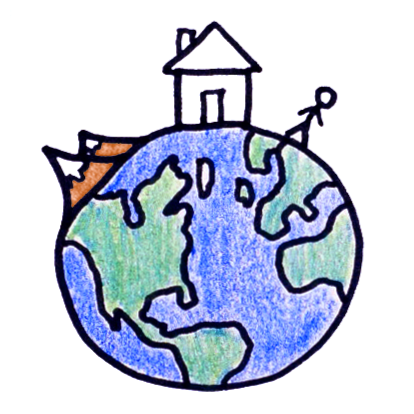2021-01-29
[public] 254K views, 14.5K likes, dislikes audio only
Check out Terra Mater’s new video about the Skywalker Gibbon - and subscribe - at https://youtube.com/terramaterofficial.
Most new species are discovered by amateurs because nowadays non-professionals are actually better suited to the requirements of new species “discovery.”
LEARN MORE
**************
To learn more about this topic, start your googling with these keywords:
Taxonomy: The branch of science concerned with classifying organisms
Taxonomic Impediment: The gaps in our taxonomic knowledge and the shortage of trained taxonomists and curators.
Amateur Taxonomist: Someone who classifies organisms but is not paid to do so.
Malacology: The study of mollusks, including snails and slugs.
Type Specimen: The specimen used to officially describe a new species.
SUPPORT MINUTEEARTH
**************************
If you like what we do, you can help us!:
- Become our patron: https://patreon.com/MinuteEarth
- Share this video with your friends and family
- Leave us a comment (we read them!)
CREDITS
*********
David Goldenberg (@dgoldenberg) | Script Writer, Narrator and Director
Arcadi Garcia Rius (@garirius) | Illustration, Video Editing and Animation
Nathaniel Schroeder | Music
MinuteEarth is produced by Neptune Studios LLC
OUR STAFF
************
Sarah Berman • Arcadi Garcia Rius
David Goldenberg • Julián Gustavo Gómez
Melissa Hayes • Alex Reich • Henry Reich
Peter Reich • Ever Salazar • Kate Yoshida
OUR LINKS
************
Youtube | https://youtube.com/MinuteEarth
TikTok | https://tiktok.com/@minuteearth
Twitter | https://twitter.com/MinuteEarth
Instagram | https://instagram.com/minute_earth
Facebook | https://facebook.com/Minuteearth
Website | https://minuteearth.com
Apple Podcasts | https://podcasts.apple.com/us/podcast/minuteearth/id649211176
REFERENCES
**************
Fontaine, B., van Achterberg, K., Alonso-Zarazaga, M. A., Araujo, R., Asche, M., Aspöck, H., Aspöck, U., Audisio, P., Aukema, B., Bailly, N., Balsamo, M., Bank, R. A., Belfiore, C., Bogdanowicz, W., Boxshall, G., Burckhardt, D., Chylarecki, P., Deharveng, L., Dubois, A., Enghoff, H., … Bouchet, P. (2012). New species in the Old World: Europe as a frontier in biodiversity exploration, a test bed for 21st century taxonomy. PloS one, 7(5), e36881. Retrieved from: https://doi.org/10.1371/journal.pone.0036881.
Mora C, Tittensor DP, Adl S, Simpson AGB, Worm B. (2011). How Many Species Are There on Earth and in the Ocean? PLOS Biology 9(8): e1001127. Retrieved from: https://doi.org/10.1371/journal.pbio.1001127.
Drew, L. (2011). Are We Losing the Science of Taxonomy? As need grows, numbers and training are failing to keep up., BioScience, 61:12 (942–946). Retrieved from: https://doi.org/10.1525/bio.2011.61.12.4.
Pearson, D., Hamilton, A., Erwin, T. (2011). Recovery Plan for the Endangered Taxonomy Profession. BioScience. 61:1 (58–63). Retrieved from: https://doi.org/10.1525/bio.2011.61.1.11.
Agnarsson I, Kuntner M. (2007). Taxonomy in a changing world: seeking solutions for a science in crisis. Syst Biol.56(3):531-9. Retrieved from: https://pubmed.ncbi.nlm.nih.gov/17562477/.
Warren, R. (2019). The New Publish or Perish: Requirements for Jobs and Tenure. ASA Footnotes. $7:1. Retrieved from: https://www.asanet.org/sites/default/files/attach/footnotes/footnotes_jan-feb-19.pdf
Leber, J. (2019). Species Sleuths: Amateur Naturalists Spark a New Wave of Discovery. Yale Environment 360. Retrieved from: https://e360.yale.edu/features/field-sleuths-the-amateur-naturalists-who-are-discovering-new-species
Nuwer, R. (2013). A Rallying Cry For Naming All Species On Earth. New York Times. Retrieved from: https://green.blogs.nytimes.com/2013/01/24/a-rallying-cry-for-naming-all-species-on-earth/
Fraussen, Koen. Personal Communication (2020). Bus Driver, Public Transport Company, Flanders, Belgium. https://scholar.google.com/scholar?hl=en&as_sdt=0%2C5&q=author%3A%22Fraussen+Koen%22&btnG=&oq=frauss
Mora, Camilo. Personal Communication (2020). Associate Professor, Department of Geography and Environment, University of Hawaii. http://www.soc.hawaii.edu/mora/index.html
https://www.patreon.com/minuteearth
/youtube/channel/UCeiYXex_fwgYDonaTcSIk6w
https://patreon.com/minuteearth
youtube.com/watch?v=QROZxXiaJ18

